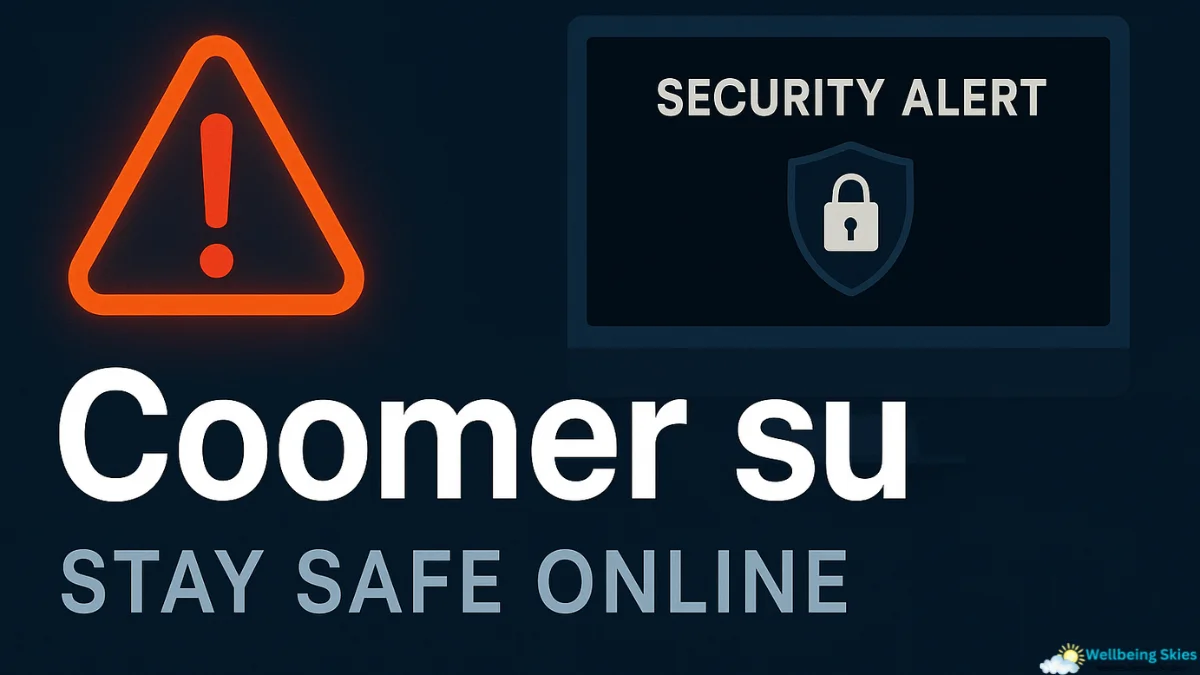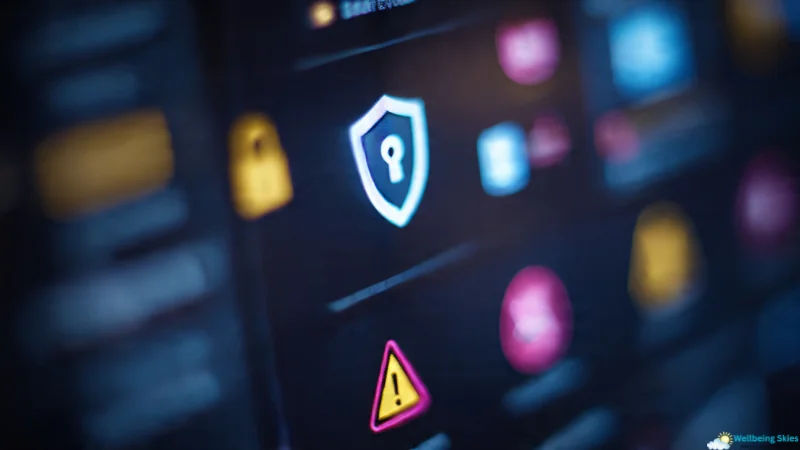The internet is a constant source of evolving slang, memes, and technical jargon. A few terms, however, manage to bridge the gap between online culture and serious digital security risks quite like Coomer su. What began as a darkly humorous piece of internet satire has ballooned into a name synonymous with large-scale digital piracy and significant cybersecurity threats.
If you’ve encountered the term Coomer su—whether through social media discussions or search engine results—you need a clear understanding of its dual nature. It is simultaneously a cultural commentary and a gateway to a risky, often illegal, corner of the web. This article will break down both sides of this phenomenon, detail the serious threats involved, and explain why authoritative websites flag these sites as dangerous.
The Dual Identity of Coomer su
To truly grasp the concept of Coomer su, we must recognize its two distinct interpretations:
The Cultural Context: The Coomer Meme
Before the term became linked to websites, “Coomer” was (and remains) a popular internet meme. Originating around 2018 and 2019 in communities like 4chan, the meme typically uses a scruffy, tired-looking variant of the Wojak cartoon.
This image is designed to humorously—or critically—represent an individual who struggles with the compulsive overconsumption of adult content. The meme quickly became a shorthand for discussions about unhealthy online habits, the psychological toll of content addiction, and the potential negative impact on mental health and productivity. The meme itself is a satirical critique, highlighting a real-world concern about digital dependency.
The Technical Context: The Archive Websites
The more dangerous interpretation of Coomer su refers to unauthorized online archive sites, often branded as “Coomer Party” or similar variants. These sites are at the heart of the controversy, operating in direct opposition to content creators and digital rights laws.
In simple terms, these sites are piracy hubs. They systematically collect, organize, and republish subscription-based, paid adult content from creator platforms like OnlyFans, Fansly, and Patreon. The content is then made available for free viewing and download by anyone, completely bypassing the creators’ payment systems. This unauthorized distribution is the core issue that raises legal, ethical, and safety concerns.
The Inner Workings of the Piracy Archives
The way these archives operate is sophisticated, posing a perpetual “whack-a-mole” challenge for content platforms and copyright holders.
The Anatomy of a Pirated Content Stream
The archive process typically follows a clear sequence:
-
Acquisition: Content is acquired either by paying users who then upload or “mirror” the material, or via automated scraping tools designed to pull content directly from creator profiles.
-
Storage and Indexing: The stolen material is stored on large servers and meticulously indexed. The sites are organized by creator name, content category, and original platform, making the massive archives fully searchable for users.
-
Public Access: Visitors can browse and download files for free. These sites generate revenue primarily through intrusive and often dangerous malvertising and pop-up advertisements.
This setup is an undeniable copyright violation, directly undermining the financial stability of creators who rely on subscription models for their livelihood.
Why the .su Domain?
The suffix in Coomer su refers to the top-level domain (.su). This is the internet country code assigned to the Soviet Union in 1990. Despite the dissolution of the USSR in 1991, the domain remains active today under Russian administration.
Website owners who choose the .su domain often do so due to its availability and, critically, the perception of lighter regulation compared to domains registered under stricter international jurisdictions. While the use of .su doesn’t automatically mean a site is illegal, it is a common characteristic among sites engaging in risky or illicit content sharing, including the unauthorized Coomer su archives.
| Feature | Legitimate Creator Platforms (OnlyFans, Fansly) | Coomer-Style Archives (.su) |
| Monetization Model | Subscription Fees, Tips (Creator gets majority share) | Malvertising, Pop-up Ads |
| Content Legality | Licensed, Creator-owned, Copyright Protected | Illegal Piracy, Copyright Infringement |
| User Safety | High (Dedicated security, payment encryption) | Extremely Low (Flagged as Riskware) |
| Ethical Stance | Supports Creative Labor and Consent | Directly Harms Creators, Exploitation |
The Triple Threat of Coomer su: Legal, Security, and Ethical Dangers
The use of Coomer su sites carries three significant risks that every user and creator must understand.
Legal Repercussions: Copyright and DMCA
From a legal standpoint, the operation of these archives is a clear-cut case of intellectual property theft.
-
For Operators and Uploaders: Creating, running, or uploading content to a Coomer su archive is a severe copyright violation. Creators and platforms actively submit DMCA (Digital Millennium Copyright Act) takedown requests to web hosts and domain registrars to combat this. The act of sharing or reuploading the pirated content carries the highest legal risk.
-
For Viewers/Consumers: While general viewing of content is rarely prosecuted, downloading and sharing it can expose individuals to legal liability, account bans from legitimate platforms, and other consequences for breach of terms of service. It is essential to recognize that this is stolen property.
Cybersecurity Nightmares: Why It’s Flagged as Riskware
Perhaps the most immediate and widespread threat of visiting a Coomer su archive is the cybersecurity danger. Security companies, including highly credible vendors like Malwarebytes, have publicly flagged many of these specific sites as riskware.
This designation means the site’s fundamental structure or advertisements are designed to potentially harm visitors. Common risks include:
-
Malvertising: Advertisements on these sites frequently employ sophisticated techniques to install malware or spyware without the user’s knowledge, or redirect them to phishing sites.
-
Clickjacking: Hidden or misleading clickable elements can cause unwanted downloads, browser hijacking, or installation of harmful scripts.
-
Malicious File Sharing: Even the downloadable archive files themselves can be infected, carrying Trojans or viruses disguised within content.
Even without downloading anything, simply visiting a high-risk site like a Coomer su archive can expose your browser to harmful scripts. It’s an environment where the safety of your device and data is deliberately compromised.
The Ethical and Mental Wellbeing Cost
Finally, engaging with these archives poses deep ethical questions. The content is created and owned by individuals who rely on their platforms for income. Consuming it for free via piracy is a direct act of theft and exploitation, stripping creators of their rightful earnings and violating their digital rights.
Furthermore, the initial satirical meaning of the Coomer meme—addressing compulsive content consumption—is tragically relevant here. A constant, free, and unending archive makes it incredibly difficult for individuals struggling with content dependency to moderate their habits, potentially exacerbating mental health, relationship, and productivity challenges.
Advice for Viewers and Steps for Content Creators
If you are a user engaging in research or have simply stumbled upon a Coomer su site, safety is paramount.
Safe Browsing Practices
-
Update Security Software: Ensure your operating system, browser, and antivirus/antimalware programs are fully updated.
-
Use Ad and Tracker Blockers: A robust ad-blocker can significantly mitigate the risk of malvertising.
-
Avoid Personal Logins: Never log into email, banking, or social media accounts while on unverified or flagged sites.
-
Avoid Downloads: Never download executable files or archives from untrusted sources.
Action for Creators
If your work is being mirrored on a Coomer su archive, swift action is crucial:
-
Document Evidence: Collect URLs, screenshots, and timestamps of the stolen material.
-
File DMCA Takedowns: Submit takedown requests to the website’s host, the domain registrar, and search engines (like Google) to delist the links.
-
Utilize Platform Tools: Use the dedicated copyright claim forms provided by platforms like OnlyFans and Fansly.
Conclusion
Coomer su represents a volatile nexus of internet culture, digital piracy, and high-stakes cybersecurity risk. While the “Coomer” meme can be viewed as harmless cultural commentary, the associated archive websites are anything but. They facilitate copyright violation, directly harm the livelihoods of content creators, and expose users to serious digital dangers, including malware and data theft.
Understanding this phenomenon is the first step toward informed and responsible digital citizenship. Always prioritize ethical consumption by supporting creators directly, and above all, safeguard your devices by steering clear of websites flagged as riskware.
FAQs
1. What is the primary difference between the “Coomer” meme and “Coomer su” websites?
The “Coomer” meme is a satirical cartoon character representing the compulsive overconsumption of adult content. The “Coomer su” term, by contrast, is primarily used to refer to illegal archive websites that steal and republish subscription-based adult content from creators on platforms like OnlyFans, often using the .su top-level domain.
2. Are Coomer su archive sites legal to visit?
Operating or uploading content to a Coomer su site that contains copyrighted material without permission is illegal and constitutes piracy. While simply viewing content is generally not prosecuted, downloading, re-uploading, or sharing the pirated files can lead to legal action for copyright infringement.
3. Why are these sites often flagged as “riskware”?
Security vendors flag these archives as riskware because their primary source of revenue—advertisements—is often highly malicious. Visiting them exposes users to malvertising, which can automatically install viruses, spyware, or Trojans onto your device, making these sites a severe cybersecurity threat.
4. What is the significance of the .su domain in “Coomer su”?
The .su top-level domain was historically assigned to the Soviet Union. Its continued use today by these archive sites is often linked to the perception that its administration offers lighter regulatory oversight compared to other country codes, making it an appealing choice for operations involved in piracy.
5. How can content creators protect their work from being featured on a Coomer su archive?
Creators can protect their work by actively monitoring for infringement and utilizing official copyright protection tools provided by their platforms. The most effective action involves quickly gathering evidence (URLs, screenshots) and submitting formal DMCA takedown requests to the website’s host, domain registrar, and major search engines.
Learn about Fidzholikohixy
I’m Salman Khayam, founder and editor of this blog, with 10 years of experience in Travel, Lifestyle, and Culture. I share expert tips on Destinations, Hotels, Food, Fashion, Health, and more to help you explore and elevate your lifestyle.


